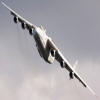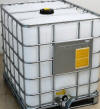Search for the supplies that you need here:
DMF Support and Documentations Available | |
 WHO-GMP Certified Good Manufacturing Practice Certified by World Health Organization |  WC, Written Confirmation for Active Substance to be imported into European Union (EU). |
Diethylenetriamine or Diethylene triamine or DETA SDS of Manufacturers
Anmol Chemicals is a manufacturer supplier exporter of Diethylenetriamine or Diethylene triamine or DETA and it offers materials as per IP BP EP Ph Eur USP NF JP FCC Food Grade as per the the latest monograph at best prices. Anmol Chemicals Group, established in 1976, is the pioneer manufacturer of Specialty Chemicals, Pharmaceutical Excipients, Some API, Food Chemicals in India. Anmol Chemicals Group has manufacturing facilities spread across Western India, representatives in Houston, Chicago USA and Dubai, UAE. We also have toll manufacturing units for processing chemicals in a few countries around the world. We make IP, BP, EP, USP, NF, Ph. Eur., JP, FCC or Food Grade, Analytical Reagent Grade, LR or Laboratory Reagent Grades and Pure Grades of various chemicals. All our items are analyzed to meet the required standards. We can supply the product in grams for your laboratory trial and in tons for your plant scale jobs.
We manufacture Bulk Drugs / API, Excipients, Pharmaceuticals (IP BP USP NF Ph Eur EP JP), Specialty Chemicals (Pure/Reagent), Mineral Fortifiers (FCC). Our manufacturing facility is FDA approved and GLP, cGMP, ISO9001, ISO14001, ISO/IEC 17025, ISO22000, FSSC 22000, ISO45001, FSSAI, Kosher, HALAL, COPP, WHO-GMP certified and Written Confirmation (WC) is available. Solid materials can be customized for particle size, shape, and bulk density. We observe WHO Good Manufacturing Practices and Good Laboratory Practices. We are a government-recognized STAR Export House and "Authorised Economic Operator (AEO)" per Indian Customs.
All technical documents and DMF support available.
Diethylenetriamine or Diethylene triamine or DETA Specifications of Manufacturers
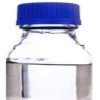
Synonyms: Diethylenetriamine or Diethylene triamine or DETA
CAS Number: 111-40-0, Molecular Weight: 103.17, Chemical Formula: C4H13N3 or HN(CH2CH2NH2)2, EINECS EC Number: 203-865-4, FEMA: ----,
Diethylenetriamine or Diethylene triamine or DETA SDS Safety Data Sheet
MSDS Sheet, Material Safety Data Sheet 27-April-25
Section 1. Product Information
Product Name & Other Names: Diethylenetriamine or Diethylene triamine or DETA.
CAS No.: 111-40-0
EINECS EC Number: 203-865-4
Chemical Formula: C4H13N3 or HN(CH2CH2NH2)2
Molecular Weight: 103.17
Relevant uses and uses advised against (if any): Industrial Manufacturing.
Suppliers: As per letterhead.
Section 2: Hazards Identification
GHS, Globally Harmonized System Classification in accordance with 29 CFR 1910
Classification according to Regulation (EC) No 1272/2008
Acute toxicity, oral Category 4, H302
Acute toxicity, Dermal Category 4, H312
Skin corrosion Sub-category 1B, H314
Skin sensitization Sub-category 1B, H317
Acute toxicity, inhalation Category 2, H330
Specific target organ toxicity - single exposure Category 3, Respiratory system, H335
Labeling according to GHS & Regulation (EC) No 1272/2008
GHS Label Elements 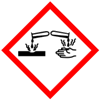 Corrosive |
GHS Label Elements 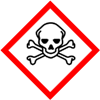 Toxic |
Signal Words: Danger
Hazard statements:
H302+H312 Harmful if swallowed or in contact with skin.
H314 Causes severe skin burns and eye damage.
H317 May cause an allergic skin reaction.
H330 Fatal if inhaled.
H335 May cause respiratory irritation.
Precautionary statements:
P202: Do not handle until all safety precautions have been read and understood.
P260: Do not breathe dust/fume/gas/mist/vapors/spray.
P264: Wash --- thoroughly after handling.
P270: Do not eat, drink or smoke when using this product.
P271: Use only outdoors or in a well-ventilated area.
P280: Wear protective gloves/protective clothing/eye protection/face protection.
P284: Wear respiratory protection.
P301+310: IF SWALLOWED: Immediately call a POISON CENTER or doctor/physician.
P304+340: IF INHALED: Remove victim to fresh air and keep at rest in a position comfortable for breathing.
P308+313: IF exposed or concerned: Get medical advice/attention.
P405: Store locked up.
P403+233: Store in a well-ventilated place. Keep container tightly closed.
P501: Dispose of contents/container in accordance with local/regional/national/international regulation.
Classification according to EU Directives 67/548/EEC or 1999/45/EC:
Hazard Symbols:
T Toxic
Xn Harmful
Risk Phrases:
R21/22 Harmful in contact with skin and if swallowed.
R23 Toxic by inhalation.
R34 Causes burns.
R41 Risk of serious damage to eyes.
R43 May cause sensitization by skin contact.
Section 3: Composition and Information on Ingredients
Product Name & Other Names: Diethylenetriamine or Diethylene triamine or DETA.
CAS No.: 111-40-0
EINECS EC Number: 203-865-4
Section 4. First Aid & Procedure
Always get medical attention after the first aid is over.
Ingestion: Never give anything by mouth to an unconscious person. Get medical attention.
Skin: Immediately flush skin with plenty of water for at least 15 minutes. Remove and wash contaminated clothing and shoes before reuse. Get medical attention if irritation develops.
Eyes: Immediately flush eyes with plenty of water for 15 minutes, occasionally lifting upper and lower eyelids. Hold eyelids apart during irrigation. Get medical attention.
Inhalation: Remove person to fresh air. If breathing is difficult, give oxygen. If not breathing administer artificial respiration. Get medical attention.
Section 5. Fire Fighting Measures
Flash Point: 97C to 102C literature
Fire/Explosion: Not considered to be a fire and explosion hazard. However, it can burn at high temperature.
Extinguishing Medium: Water spray, alcohol-resistant foam, dry chemical or carbon dioxide.
Special hazards arising from the substance or mixture: Fumes may evolve along with nitrogen oxide, carbon oxides.
Fire Fighting Instructions: Use suitable protective equipment for surrounding fire.
Special Information: In the event of a fire, wear full protective clothing and NIOSH-approved self-contained breathing apparatus with full face piece operated in the pressure demand or other positive pressure mode. At high temperatures under fire conditions, it may produce toxic or irritating fumes. Fire-extinguishing work is done from the windward and the suitable fire-extinguishing method according to the surrounding situation is used. Uninvolved persons should evacuate to a safe place.
Section 6. Spills and Disposals
Personal precautions, protective equipment and emergency procedures: Avoid breathing dust/fumes/gas/mist/vapors/spray. Ensure adequate ventilation. Don't touch or walk through this product. Use individual protective equipment (waterproof boots, suitable protective clothing, safety glasses, etc.). Restrict unprotected personnel from the area. Prevent any contact with hot surfaces. Do not approach facing the wind. Do not touch the spilled material.
Environmental precautions: Do not let the product enter drains, soil or water sources.
Methods and materials used for containment Cleanup procedures and Storage: Contain spilled material. Cover with an inert, non-combustible absorbent material, (e.g. sand, earth, diatomaceous earth, vermiculite). Vacuum or sweep-up and remove to an approved disposal container.
Section 7. Handling and Storage
Toxic hazardous material. Avoid inhalation, contact with skin and eyes. Avoid formation of dust and aerosols. Avoid exposure.
Precautions for safe handling: Apply according to good manufacturing and industrial hygiene practices. Ensure proper ventilation. Wash thoroughly after handling. Do not drink, eat or smoke while handling. Avoid contact with skin, eyes and clothing. Minimize dust generation. Avoid breathing dust/fumes/gas/mist/vapors/spray. Avoid prolonged or repeated exposure. Keep container tightly closed. Avoid ingestion and inhalation. Use individual protective equipment (waterproof boots, suitable protective clothing, safety glasses, etc.). Prevent any contact with hot surfaces.
Conditions for safe storage, including any incompatibilities: Store in cool, dry and ventilated area away from heat sources and protected from sunlight in tightly closed original container. Keep air contact to a minimum. Do not leave the material container open. Store protected from heat, sparks and ignition sources and incompatible materials. Avoid contact with skin and eyes. Avoid inhalation of dust/mist/vapor. Do not store with incompatible materials like oxidizing agents, nitric acid strong acids organic nitro compounds.
Section 8. Exposure Controls & Personal Protection
Exposure Limits: Contains no components with established occupational exposure limits.
Engineering Controls: Use adequate exhaust ventilation to keep airborne concentrations below the allowable exposure limit.
Ventilation System: A system of local and/or general exhaust is recommended to keep employee exposures as low as possible. Local exhaust ventilation is generally preferred because it can control the emissions of the contaminant at its source, preventing dispersion of it into the general work area.
Personal Respirators (NIOSH Approved): For conditions of use where exposure to dust or mist is apparent and engineering controls are not feasible, a particulate respirator may be worn. For emergencies or instances where the exposure levels are not known, use a full-face positive-pressure, air-supplied respirator.
Skin Protection: Wear protective gloves and clean body-covering clothing.
Eye Protection: Use chemical safety goggles and/or full face shield where dusting or splashing of solutions is possible. Maintain eye wash fountain and quick-drench facilities in work area.
Other Control Measures: Maintain good housekeeping in work area. Handle in accordance with good industrial hygiene and safety practice. Wash hands after handling.
Section 9. Physical & Chemical Data
Appearance: Colorless liquid.
Odor: Ammonia like .
Odor threshold: Not available.
pH: Not available.
Relative density: about 0.95
Melting Point: -39C literature.
Initial boiling point and boiling range: 207C literature..
Flash point: 97C to 102C literature.
Auto-ignition temperature: Not available.
Decomposition temperature: Not available.
Upper/lower flammability or explosive limits: Not available.
Vapor pressure: Not available.
Vapor density: Not available.
Evaporation rate: Not available.
Flammability (solid, gas): Not available.
Partition coefficient: n-octanol/water: Not available.
Solubility(ies): Soluble in water and in alcohol.
Viscosity: Not available.
Chemical Formula: C4H13N3 or HN(CH2CH2NH2)2
Molecular Weight: 103.17
Section 10. Stability and Reactivity
Chemical Stability: Stable under normal temperatures and pressures. Forms explosive mixtures with air on intense heating.
Incompatibility (Materials to Avoid): Oxidizing agents, nitric acid strong acids organic nitro compounds.
Conditions to Avoid: Incompatible materials, excessive heat.
Hazardous Decomposition Products: Fumes may evolve along with nitrogen oxide, carbon oxides.
Hazardous Polymerization: Will not occur.
Section 11. Toxicological Information
Toxicity to Animals:
LD50 Oral - Rat - 1553 mg/kg.
LD50 Dermal - Rabbit - 1045 mg/kg.
Carcinogenicity: No component of this product present at levels greater than or equal to 0.1% is identified as probable, possible, or confirmed human carcinogen by IARC, NTP ACGIH or OSHA.
Mutagenic Effects: No information found.
Reproductive Effects: No information found.
Developmental Toxicity: No information found.
Section 12. Ecological Information
Toxicity to fish: LC50 - Poecilia reticulata (guppy) - 1.014 mg/l - 96 h.
Toxicity to daphnia and other aquatic invertebrates: static test EC50 - Daphnia magna (Water flea) - 16 mg/l - 48 h
Persistence and Degradability: Unlikely to persist due to water solubility.
Mobility: Likely to be mobile due to water solubility.
Bioaccumulation/ Accumulation: No information available.
Results of PBT and vPvB assessment: No data available for assessment.
Section 13. Disposal Suggestions
Dispose of in accordance with all applicable local, state, and federal regulations at an approved waste disposal facility.
Section 14. Transport and Label Information
DOT (USA) & ADR/RID Europe:
UN-No UN 2079
Proper Shipping Name: DIETHYLENETRIAMINE
Hazard Class 8, Packing Group II
IMDG/IMO
UN-No UN 2079
Proper Shipping Name: DIETHYLENETRIAMINE
Hazard Class 8, Packing Group II
IATA/ICAO:
UN-No UN 2079
Proper Shipping Name: DIETHYLENETRIAMINE
Hazard Class 8, Packing Group II
Section 15. Regulatory Information
USA:
SARA 302: No chemicals in this material are subject to the reporting requirements of SARA Title III, Section 302.
SARA 311/312: Acute Health Hazard; Chronic Health Hazard, as per section 2.
California Prop.65: This product contains no chemical known to the State of California to cause birth defects or other reproductive harm.
Section 16. Other Information
European Labeling in Accordance with EC Directives:
H302 + H312 Harmful if swallowed or in contact with skin.
H314 Causes severe skin burns and eye damage.
H317 May cause an allergic skin reaction.
H330 Fatal if inhaled.
H335 May cause respiratory irritation.
Classification according to EU Directives 67/548/EEC or 1999/45/EC:
Hazard Symbols:
T Toxic
Xn Harmful
Risk Phrases:
R21/22 Harmful in contact with skin and if swallowed.
R23 Toxic by inhalation.
R34 Causes burns.
R41 Risk of serious damage to eyes.
R43 May cause sensitization by skin contact.
Disclaimer:
**************************
Our company provides this MSDS sheet in good faith but makes no representation as to its comprehensiveness or accuracy. This SDS sheet is intended only as a guide to the appropriate precautionary handling of the material by a properly trained person using this product. The above information has been compiled from various sources and has the possibility of discrepancy and being out-dated information. Individuals receiving the information must exercise their independent judgment and do further search in determining its appropriateness for a particular purpose. In no case shall our company be liable to loss or damages by the product user.
**************************



Manufacturer Supplier Exporter
ANMOL CHEMICALS Private Limited
Representatives in Houston, Chicago and New York, USA
TEL: (OFF) +91 22 23726950, +91 22 23774610, +91 22 23723564
Taloja Navi Mumbai, Banglore, INDIA
e-mail: info@anmol.org
Copyright and Usual Disclaimer is Applicable
Last updated 12-oct-25
Exporters to USA, Canada, UAE, Kuwait, Qatar, Gautemala, Tunisia, Europe, South Africa, Bangladesh, Sri Lanka, Tanzania, Kenya, Egypt, Iraq, Turkey, Israel, Vietnam, Nigeria, Uganda, Brazil, Chile, Argentina, Dubai, UAE, Saudi Arabia, Cameroon, Mexico, Brazil, Chile, Argentina, Korea, Thailand, Malaysia, Indonesia, Jakarta, Australia, China, Germany, France, etc.
Representatives in New York, Houston - Texas, Chicago - Illinois, Los Angeles.
All products are Sold for Industrial and Laboratory Use only.
Fast Selling IP BP Ph Eur EP USP NF JP Analytical Reagent FCC Food Grades of Chemicals by Anmol Chemicals
Ammonium Persulfate --- Acetic Acid Glacial --- Aluminum Chloride --- Ammonium bicarbonate --- Benzyl Alcohol --- Butylated Hydroxyanisole --- Butylated Hydroxytoluene --- Boric Acid --- Calcium Butyrate --- Calcium Chloride --- Calcium Hydroxide --- Calcium Lactobionate --- Calcium Saccharate --- Carbamide Peroxide --- Calcium Oxide --- Calcium Sulfate --- Chromic Chloride --- Fumaric Acid --- Magnesium Butyrate --- Magnesium Chloride --- Magnesium Sulfate --- Malic Acid --- Maleic Acid --- Manganese Chloride --- Manganese Sulfate --- Octyldodecanol --- Oleic acid --- Phenylethyl Alcohol --- Propylene Carbonate --- Potassium Hydroxide Pellets --- Potassium Alum --- Selenious Acid --- Sodium Acetate --- Sodium Bromate --- Sodium Selenite --- Sodium Perborate --- Sodium Hydroxide --- Sodium Sulphate --- Sodium Sulfide --- Sodium Thiosulfate --- Urea --- Zinc Chloride --- Zinc Sulphate ---












